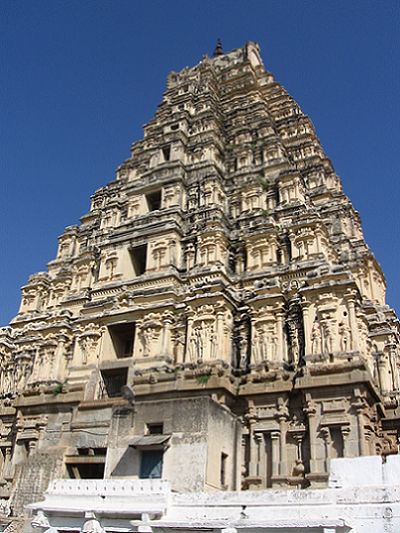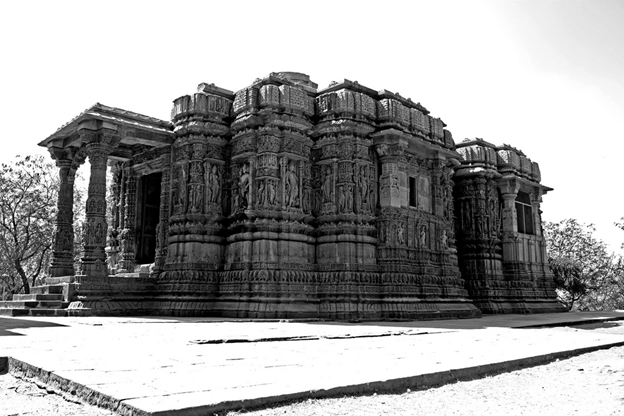Nov 02, 2025
Nov 02, 2025
While the Gupta period marked the zenith of Buddhist art and culture, it is also responsible for coalescing myriad deities and figures from the Vedic and pre-Vedic ages into the three chief figures of the Hindu pantheon – Shiva, Vishnu and Brahma. From this age on all Hindu art and architecture were dedicated to one of these three deities. Aberrations and regional sects, whenever powerful enough, were integrated into this pantheon at regular intervals to give modern Hinduism its mystifying array of deities, gods and goddesses.
 While Buddhism demanded monastic and congregational worship in its construction of Chaitya halls, Hinduism during the Guptas and later was a much more playful religion, with the Hindu temple being at the forefront of the religion’s representation of the cosmos, man and the gods. The hindu temple is designed literally as as garbha griha (womb) where the God resides in the innermost chamber. Exterior chambers (mandapas) are part of the god’s domain, but the further to the exterior from the garbha griha that one goes, the less sacred the space becomes. The temple is the place where the sacral (the gods and the cosmos) meets the secular (the common citizens). It is a place where the Hindus can commune with the gods through the acts of pradakshina (circumambulation) and darshan (viewing the deity as an idol) and through puja (offering food and services). Much more than the chaitya or the vihara, the Hindu temple is the place which becomes the focus of the community at large, and a center of social, religious, cultural and political life.
While Buddhism demanded monastic and congregational worship in its construction of Chaitya halls, Hinduism during the Guptas and later was a much more playful religion, with the Hindu temple being at the forefront of the religion’s representation of the cosmos, man and the gods. The hindu temple is designed literally as as garbha griha (womb) where the God resides in the innermost chamber. Exterior chambers (mandapas) are part of the god’s domain, but the further to the exterior from the garbha griha that one goes, the less sacred the space becomes. The temple is the place where the sacral (the gods and the cosmos) meets the secular (the common citizens). It is a place where the Hindus can commune with the gods through the acts of pradakshina (circumambulation) and darshan (viewing the deity as an idol) and through puja (offering food and services). Much more than the chaitya or the vihara, the Hindu temple is the place which becomes the focus of the community at large, and a center of social, religious, cultural and political life.
While the Hindu temple as a whole is conceived of as a pure work of art rather than architecture, it is in its external and internal ornament, though it must be said that the internal work is negligible compared to the external, especially on the elevation and facades. In a Hindu temple, the classic plan according to the texts usually provides for blind exits (ghana dwaras) on three sides of the elevation, and a main exit on the fourth side. The ghana dwaras are marked by the presence of a niche containing a main or subsidiary deity. Temple ornament in the Hindu tradition goes through a variety of expressions : from simple floral and geometric patterns in the earliest temples to luxuriantly ornate foliage, human and animal forms in ‘high’ temples such as the one at Modhera or at the Khajuraho complex. A clear lineage of temple elevation development – and the consequent ornament – can be seen from a Buddhist chaitya elevation to that of a full-fledged temple.
There is also a clear difference and distinction in the development of a south Indian and a north Indian temple form. In the north, the chaitya hall window (gavaksa) was used repetitively as a surface pattern, creating a rich striated and honeycomb effect, while in the south other variations of the chaitya hall roof – the kuta, the nasi and the panjara and sala were used to cover the very distinctive form of the south Indian spire. While the north and south Indian styles of temple art came to be called the nagar and the Dravidian style respectively due to their distinctive shape of spires, it is true that close examination also shows much difference in the way art was used to decorate and embellish the spires themselves. It is in this way that the Hindu temple spire is conceived much as a three dimensioned work of art, rather than as tectonic architecture, and it is here also that a significant difference exists between a Hindu temple and a western cathedral. When we add to a Hindu temple the symbolism inherent in its art, form and façade decoration, we get a monumental expression of Hindu thought that is quite unique in its production and conception.

Another concept that is inherent in Hindu temple art is that of repeating units, or fractals. Each part of a Hindu temple’s façade is designed to look like a miniature reproduction of the whole, thus creating units that are smaller in scale but very similar in design and visual intent. The intention is to reproduce the Hindu view of the cosmos, which is an iterative composition where the sum is a composite of infinite, and similar, parts.
Of course, none of this va-et-vient between structure and ornament, between façade and interior, between the spire and the mandapa took place in the absence of an established canon. However, it is true that for temple art, a canon took centuries to evolve and develop. There are two distinct phases, the first from the 5th to 8th century AD, when rock cut temples and structural temples vied for prominence, and a later phase from the 8th to the 18th century, when a canon had developed from early beginnings and structural temples were firmly in place as the definitive version of Hindu art as manifested in the temple.
Our subsequent pieces will focus on these two phases in Hindu art and temple development.
Images:
Virupaksha Temple Hampi (c) T. Praveen
Surya Temple Modhera (c) Sudhamshu
Previous Article: Buddhist Art: The Later Phase
14-Aug-2010
More by : Ashish Nangia